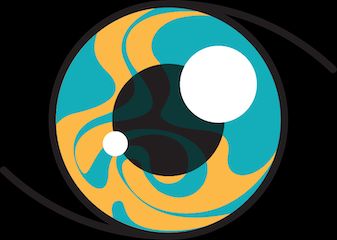In treatment-resistant bipolar depression, symptoms don’t respond to standard treatments, making management difficult. Alternative therapy options and self-help techniques may help you cope.
Despite various treatment options, some individuals with bipolar disorder continue to experience debilitating symptoms, especially during depressive episodes.
Let’s take a look at what defines treatment-resistant bipolar disorder, its symptoms, and various strategies to manage this complex form of the illness.
Treatment-resistant bipolar disorder occurs when symptoms — such as mania or depression — do not respond adequately to standard treatments like:
Depressive episodes are especially difficult to treat, with about
Symptoms of treatment-resistant bipolar depression are similar to symptoms of bipolar depression that are managed with first-line treatment options.
However, if your symptoms persist despite treatment with standard medications, you may experience:
- persistent sadness or hopelessness
- fatigue and lack of energy
- difficulty concentrating
- sleep disturbances
- appetite or weight changes
- loss of interest in activities
- feelings of worthlessness or guilt
- suicidal thoughts or behavior
While challenging, it is possible to cope with treatment-resistant bipolar depression.
Consider trying various non-first-line medications, like ketamine or modafinil. Here are some options to consider:
Medically supervised ketamine therapy
Ketamine is a drug originally used as an anesthetic but is now also used to treat bipolar depression.
It helps by altering the brain’s glutamate system, which can quickly improve mood. Since its effects may be short-lived, it’s often combined with other treatments for more lasting results. Combining ketamine with psychotherapy may extend its benefits even further.
Lurasidone
Lurasidone is an atypical antipsychotic medication. It’s typically used when other treatments have not been effective or when there are specific reasons to choose it over other options.
One
Modafinil
Modafinil is a medication commonly used to promote wakefulness in conditions like narcolepsy and obstructive sleep apnea. More recently, it has been explored as an adjunctive treatment for bipolar 1 depression.
Some
However, there are concerns about modafinil potentially triggering manic episodes or psychosis in people with bipolar disorder or other psychiatric conditions.
Advanced therapies
- Magnetic seizure therapy (MST): A less invasive alternative to electroconvulsive therapy, has shown promise in treating treatment-resistant bipolar depression. One
study reported significant improvements, with remission rates of about 23% for those completing a minimally adequate trial and 30% for full trial completers. - Deep brain stimulation (DBS): Which involves implanting electrodes in the brain to regulate mood, is also being explored for bipolar depression with
promising results . - Transcranial magnetic stimulation (TMS): A noninvasive treatment option that uses magnetic fields to stimulate nerve cells in the brain. Its
effectiveness can vary depending on the individual.
Alongside medication, adopting lifestyle changes like exercise and using immediate coping strategies, such as taking a cold shower, may also help manage your symptoms.
In addition to the therapies and medication options available for treatment-resistant bipolar disorder, you may also consider trying:
Cold water immersion
Short bursts of cold water, such as cold showers or immersion,
A
- increased energy
- improved self-esteem
- reduced tension
- decreased anger
- lowered depression
- reduced fatigue
In contrast, the control group, who didn’t experience cold-water immersion, showed little to no change in mood.
Regular exercise
Physical activity, particularly aerobic exercise, can significantly improve mood by releasing endorphins, reducing anxiety, and improving sleep quality.
Outdoor exercise is especially beneficial due to the added benefits of sunlight exposure.
A review of 218 studies showed that exercise, especially walking or jogging, yoga, and strength training, can
Mindfulness and meditation
Practicing mindfulness or guided meditation can help calm the mind, reduce anxiety, and improve emotional regulation. In turn, this can help you manage the stress and mood fluctuations associated with bipolar depression.
A
Those who attended all meditation sessions and practiced regularly experienced the most benefits. Meditation helped alleviate feelings of guilt, depressed mood, and hopelessness.
Supplements
Some supplements may help manage bipolar depression when used alongside traditional treatments, though they should always be discussed with a healthcare professional.
Here are a few that have shown potential:
- omega-3 fatty acids
- N-acetylcysteine (NAC)
- magnesium
- folate (L-methylfolate)
- vitamin D
Spicy foods
Foods containing capsaicin, the compound that makes spicy food hot, can trigger the release of endorphins and serotonin, providing a natural mood lift and temporarily reducing stress.
Support system
A strong support system offers both emotional and practical benefits. Your support system may include:
- family
- friends
- therapy
- support groups
Loved ones can assist with everyday tasks that may become overwhelming during depressive episodes, such as household chores, appointments, and medication management.
In addition, therapy and support groups can provide safe spaces for sharing experiences, learning coping strategies, and connecting with others who face similar challenges.
Treatment-resistant bipolar disorder occurs when symptoms of bipolar disorder, particularly depression, don’t respond well to standard treatments, even after trying multiple medications or therapies.
While it can be challenging, emerging treatments and strategies offer hope. With persistence and support, you can find a path toward managing your symptoms and improving your quality of life.









